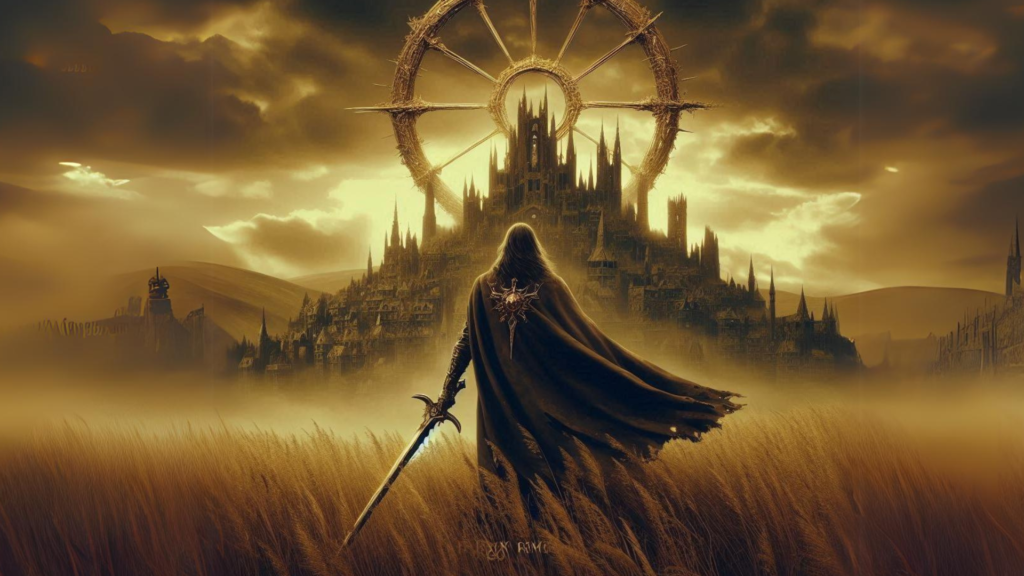I know that themes often tend to be one of those things we dread having to analyze in English class, but as writers, themes are actually very helpful to include in our books. Themes add a sort of depth to the story and the overall narrative and helps readers connect with what’s being told to them on a different level. Developing themes for a book is actually not that complicated at all, and I do it quite often. That’s why for today’s post, I’ll be teaching you how to effectively develop themes for your next book or even your current WIP.
(affiliate disclaimer: some of the links in this post are affiliate links, meaning that I make a small commission at no extra cost to you when you purchase through my link)
The Basics of Themes
What is a Theme?
A theme is most easily described as a main idea/topic or a message that exists within the context of an overall narrative. The theme is essentially a concept that ties the elements of your story together and can be anything from a concept to a solidified idea. You’ll often hear people describing a story as having themes of justice and redemption, but there can also be more in-depth and defined themes such as the struggle against oppression.
Why Are Themes Important for Stories?
Themes are actually very important for the overall quality of the story. They help to give a central concept for a reader to identify your story by and they also help to create a lasting effect on the reader. What you want is when a reader closes your book, they actually remember and think about the theme of your story. Themes also help to make your story deeper from a narrative perspective, because you can highlight human experiences and that can resonate with your readers a lot.
How to Identify the Theme
Start with Your Story
Before you really get into the nitty-gritty of themes, you want to identify the central idea behind your story. There are a few ways you can do this, but it’s pretty much employing skills you’ve probably learned in English class. You want to think about the main idea of your story, the central plot, the conflicts, etc… What are the big things that happen in your story and what significance do they play in the overall story?
I’ll use my series, The Fallen Age Saga, as an example and I’ll focus on Book 1, Malware. Blide struggles against a deep conspiracy, and so the idea is that not everything you see is what’s really there. Furthermore, there is the main idea of people being used as pawns in a much bigger story.
Think About Your Characters
Character-driven stories tend to have themes concentrated around the characters themselves. The main characters and their journeys represent a sort of manifestation of the thematic elements of your story, which is why you should consider the characters when thinking about the theme itself. Think about the goals, motivations, conflicts, changes, etc… that characters experience in the story.
Blide Stevens’ goal of figuring out the conspiracy behind his discoveries leads him to fall head-first into a conflict that involves ancient demons, aliens, wars, religions, etc.. and all of it plays a role in the overall theme of the story as well. I can’t say much about his character arc, but there’s a lot of connection between it and the theme of my series.
Look for Recurring Motifs
If you aren’t sure what a motif is, a motif is basically a recurring element in your story like an object, a phrase, or something similar that appears multiple times throughout the book. Motifs are also found in soundtracks, but we’re not here to talk about that–though, that had to be one of the most insightful classes I took in university. Looking for motifs in your books can help you define your theme as well.
Once you’ve identified the theme, it’s time to work on developing it more. Just to note, you don’t have to have finished your book before you identify the themes–you just need to understand the biggest elements of your plot.
Developing the Themes More
Theme and Plot
After identifying your themes, what you want to make sure is that your theme is reflected in the overall plot of your story. Developing your theme requires it to have some sort of role in the story, so if your themes are things like redemption, you should include some sort of redemption arc for your character. The thematic elements should not be added to the story just because, but should be added because they mean something to the overall plot.
Symbolism and Metaphors
Symbolism is basically a tool used in literature where the item being used as a symbol conveys a point for the story. For instance, a sword in a story can represent a character’s life changing, or a location can represent something from real life. Metaphors are basically used to convey ideas through some sort of imagery. It’s different from a simile, as a metaphor is something that is related in a way. For instance, the idea of internal conflict being represented as a sort of storm is a metaphor. We know that there isn’t actually a storm in the character’s head, but the turmoil they face is best represented visually as a storm.
The theme should be subtle and it shouldn’t be just outright told to the readers. It should be something that a reader can identify after reading through your story via some level of analysis.
Staying Consistent With Themes
Don’t Over-Theme Your Story
One mistake I see some writers making is including so many themes in a story that it starts to honestly get overwhelming. Sure, it can be tempting to try and include a lot of themes, but too many themes will make your story feel generally unfocused. You want to work on a few key themes per story and develop them well without overwhelming your reader. You can definitely work with other ideas and you don’t have to stick by your themes only to convey your message, but try not to go overboard. At the end of the day, moderation is great.
Subplots Help Themes Develop!
A subplot is essentially a storyline that exists within the main plot of your story. A subplot is something that happens but doesn’t overtake the main plot; rather, it should help reinforce the main plot of the story. Oftentimes, writers will use the subplot to help advance the thematic elements of the story more. It helps to reinforce your main ideas and it creates interesting ways to spin from the central plot into other side-stories.
Advice and Tips
I want to give some general advice about creating themes as well, as I think there are some important things to mention as well.
Have a Theme Brewing Before Writing
I recommend that you open a document or grab a piece of paper before you even start writing the deep parts of your draft and list a few ideas you have for your themes. You want to think up the messages and the concepts that you want to convey to readers throughout your story. Having a focus from the beginning helps you to stay on track and keeps your story concentrated so you’re not branching out crazily everywhere.
However, Be Open to Change
Even if you already have a theme that you want to write about, you should still be open to change. If you start with a plot outline, your first draft may not follow that outline, and your final draft may not follow your first draft either. At the end of the day, writing a story is an interesting, growing process that sometimes seems to take a mind of its own. Your themes may end up being the same way and change as you write through your story.
Examples of Effective Themes
There are many stories that we read often that have great themes at their core. For instance, Tolkien’s Lord of the Rings is about the work of ordinary people stopping evil and that even if something seems impossible, perseverance overcomes obstacles.
My book, Malware, pertains a lot to the ideas of morality and justice, as well as where do we draw the line on what’s right and wrong. Furthermore, it delves into the idea of people being used as pawns in a bigger game, with this theme being further explored through Joel’s eyes in Book 2, Soldat.
Prince of Thorns by Mark Lawrence talks a lot about the themes of corruption, revenge, and the struggle for power.
An effective theme is one that a reader can walk away from a story and point out several instances of that theme at play in the story. At the end of the day, you shouldn’t worry too much about coming up with a theme, as I find that it sort of happens naturally. However, it’s never a bad practice to keep in mind creating a theme for a story.
Before you head on out, be sure to check out my series, The Fallen Age Saga and don’t forget to subscribe to my newsletter so you can stay up to date on my latest WIPs, posts, and more!

